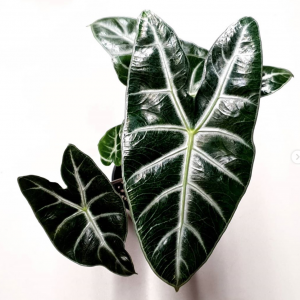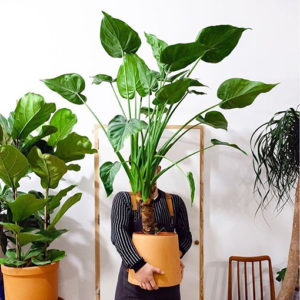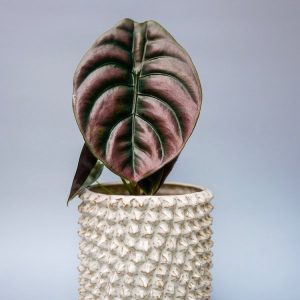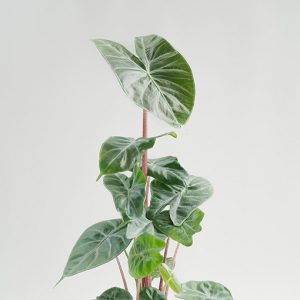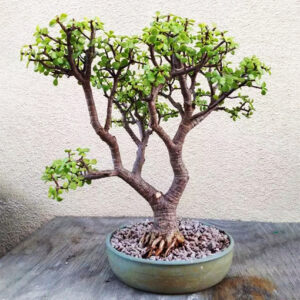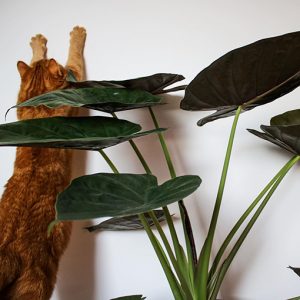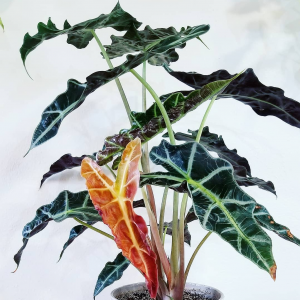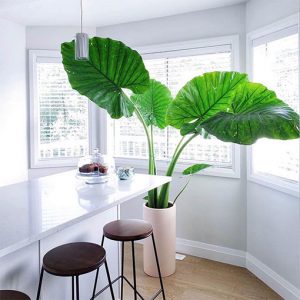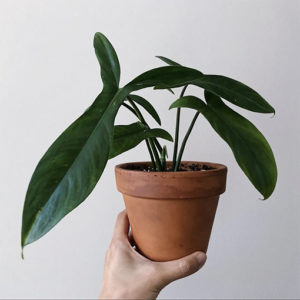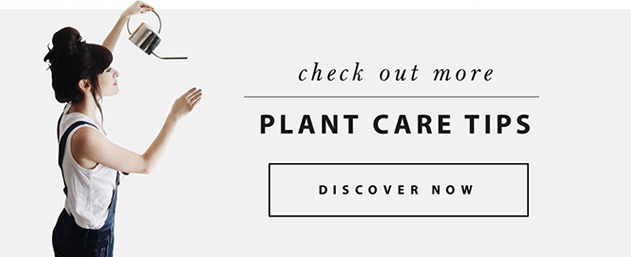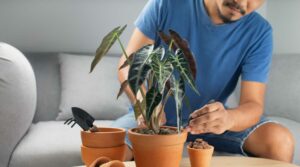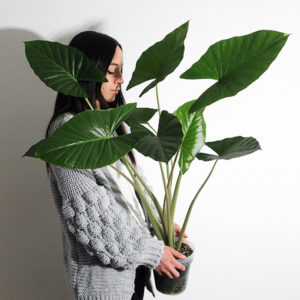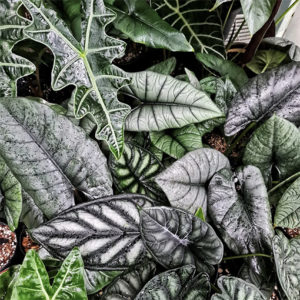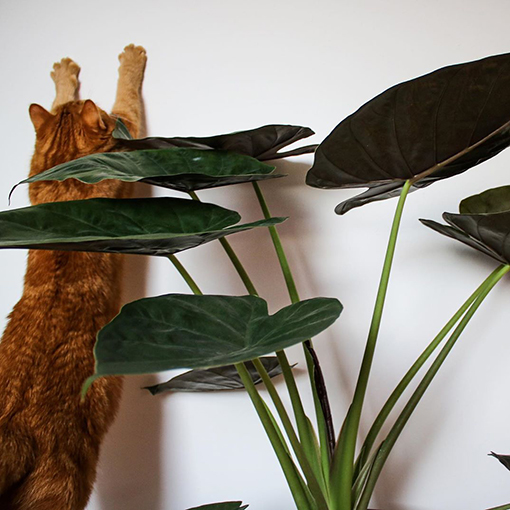
Green on the front and deep purple on the back, this is a plant that’ll make you say “gosh darn ain’t nature cool!”. The Alocasia Wentii is one pretty boy that you need to get your hands on at our next sale! 🌱
📷: @sistersofplants
Where to buy Alocasia Wentii in Australia?
Why we’re glad you asked as we do our best to have a steady supply of Alocasia Wentii and often in a couple of sizes.
Alocasia Wentii Introduction
The Alocasia Wentii also known as the New Guinea Shield or the Hardy Elephant’s Ear is native to the highlands of New Guinea. It is a popular houseplant for it’s large leaves, that are a unique colour with an almost purple/burgundy underside and a Hunter Green (dark greyish green) top. Being native to New Guinea it is a Tropical plant that appreciated higher humidity but tends to do well as an indoor plant.
Alocasia Wentii Light
Alocasia wentii grows in bright, indirect light, but is vulnerable to burn quickly in direct sunlight, especially hot summer midday sun. Direct sunlight in the morning or late afternoon will be fine.
A foot or two back from a sunny window is often a great spot. Artificial lighting can also be used to support it’s light requirements.
Alocasia Wentii Watering
Watering is an important aspect of alocasia care. The Alocasia wentii needs a lot of water, especially in hot weather, especially if grown outdoors in tropical environments.
Alocasia wentii can be sensitive to overwatering though, as it can develop fatal root rot in boggy soil; so having a brief period of partial drying helps curb disease and fungal issues.
Never let the soil go completely dry, however. The plant may droop if underwatered, but this is a warning of desiccation and not a friendly reminder – don’t wait for this plant to “tell” you when it needs water.
Alocasia Wentii Soil
As for soil, Alocasia wentii grows best in well-drained soil. The mixture must have a strong structure that supports good breathability while retaining a moderate amount of moisture. Organic matter is a great way to build the right texture and add fertility.
Alocasia Wentii Humidity
Alocasia wentii enjoys humid conditions and will grow best in a humid environment. Ideally, keep humidity between 60% and 80% to allow optimum growth and encourage most vibrant leaves. The plant may struggle through lower humidity conditions and be prone to becoming lackluster and developing brown, dry areas on its leaves.
However, the plant can generally tolerate average indoor humidity down to about 40%. To increase humidity bunch next to other plants, get a humidifier or mist over winter.
Alocasia Wentii Fertilizer
This plant can eat a lot of food during the growing season, so you need to make sure it gets enough nutrients.
Root inhibition and damage due to over-fertilization usually manifests itself as leaf discoloration. The tip often turns brown.
Feed monthly during the growing season with fertilizer diluted to half the label’s recommendation. Take into account the fertility of the plant’s soil.
We recommend using our Plant Food available here.
Alocasia Wentii Toxicity
Alocasias are generally toxic to humans, dogs, cats and horses. This plant contains oxalic acid that forms highly pungent calcium oxalate crystals.
Symptoms start with a oral burning sensation that can lead to vomiting, drooling, and difficulty in swallowing.
The sap of Alocasia wentii is also toxic and can cause irritation or dermatitis, so wear protection when handling the plant.
Alocasia Wentii Extra Tip
An Alocasia Wentiis Water consumption soars during leaf production. To avoid a plant-damaging dry spell, water more frequently and monitor the soil daily.
Higher humidity will allow the Alocasia wentii to tolerate more intense light.
Your Alocasia wentii is slow to adapt to change, so expect to lose some leaves after bringing her home or after a major relocation. Don’t overreact and move the plant again to “find the right spot.”
Like most tropical plants, an Alocasia wentii leans towards it’s light source. Rotate the plant regularly to prevent it from becoming lopsided: just give the pot a quarter-turn clockwise every time you water.
Want an Alocasia Wentii?

